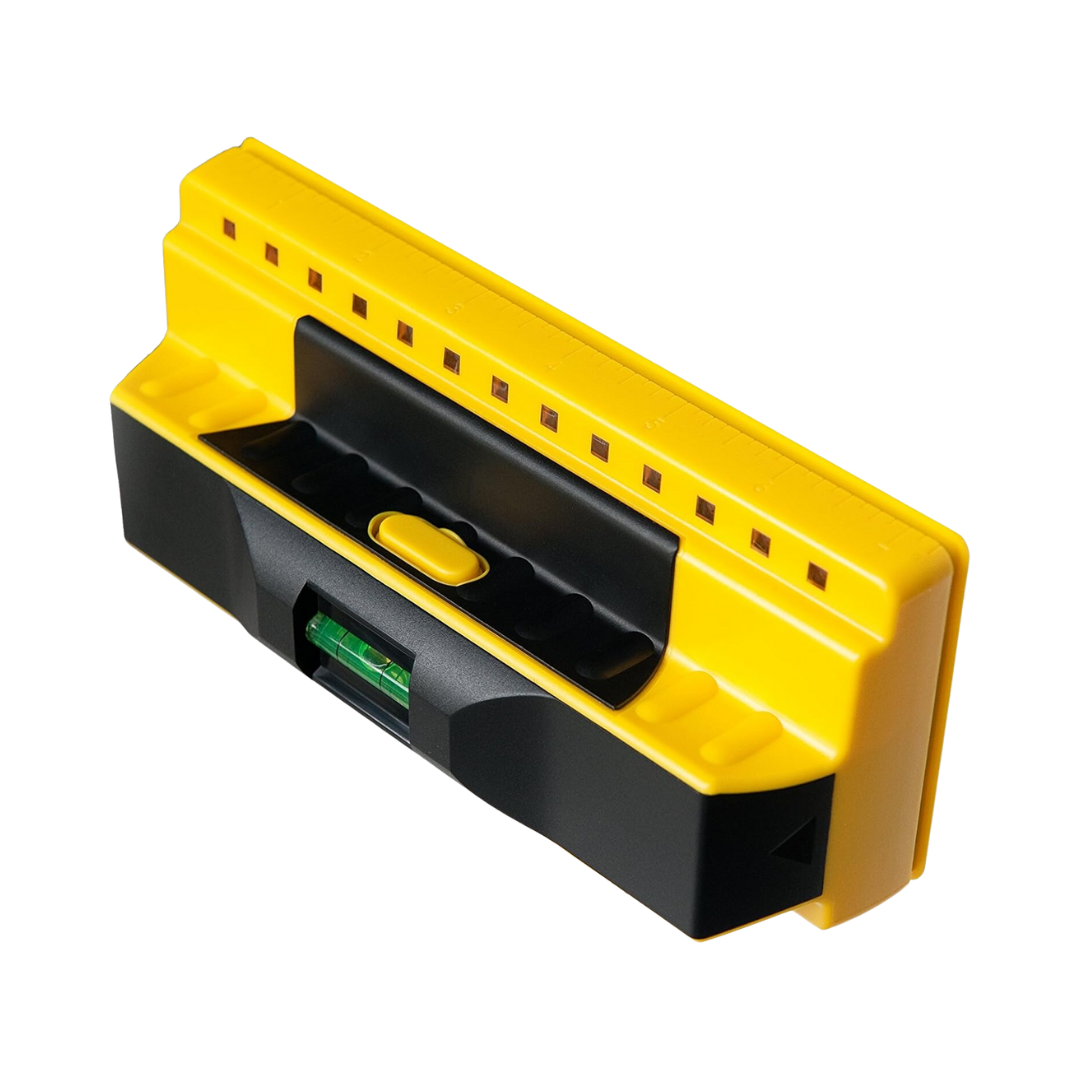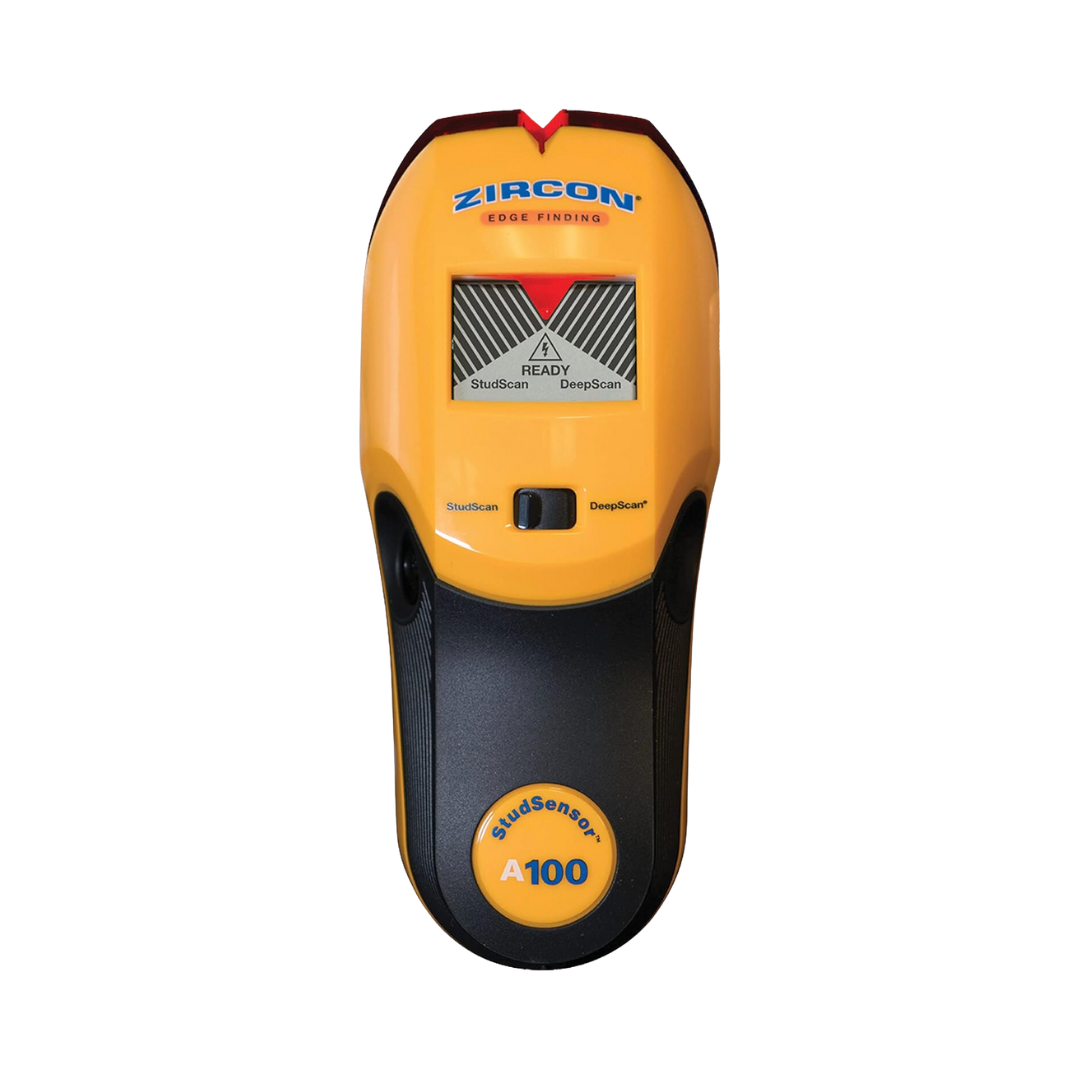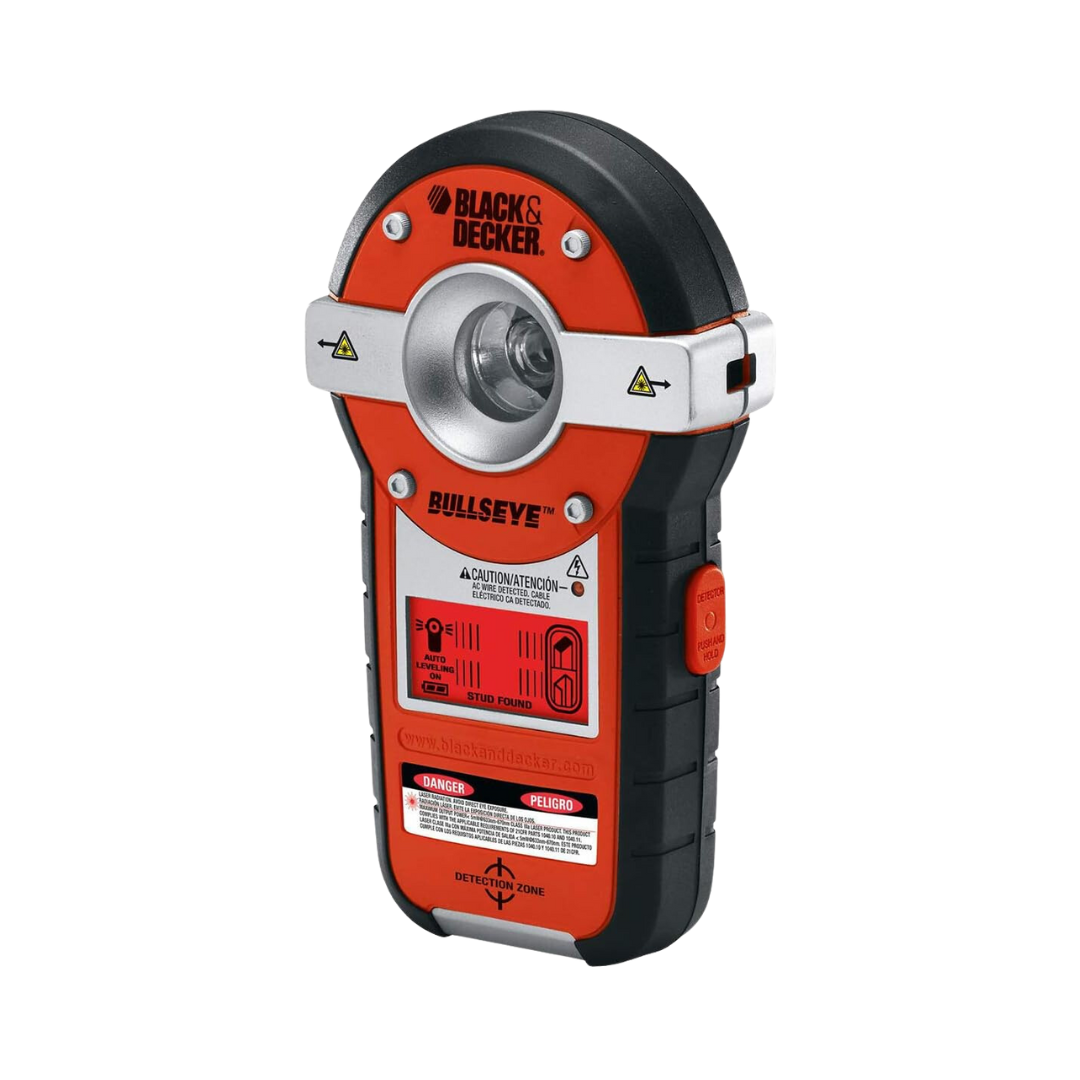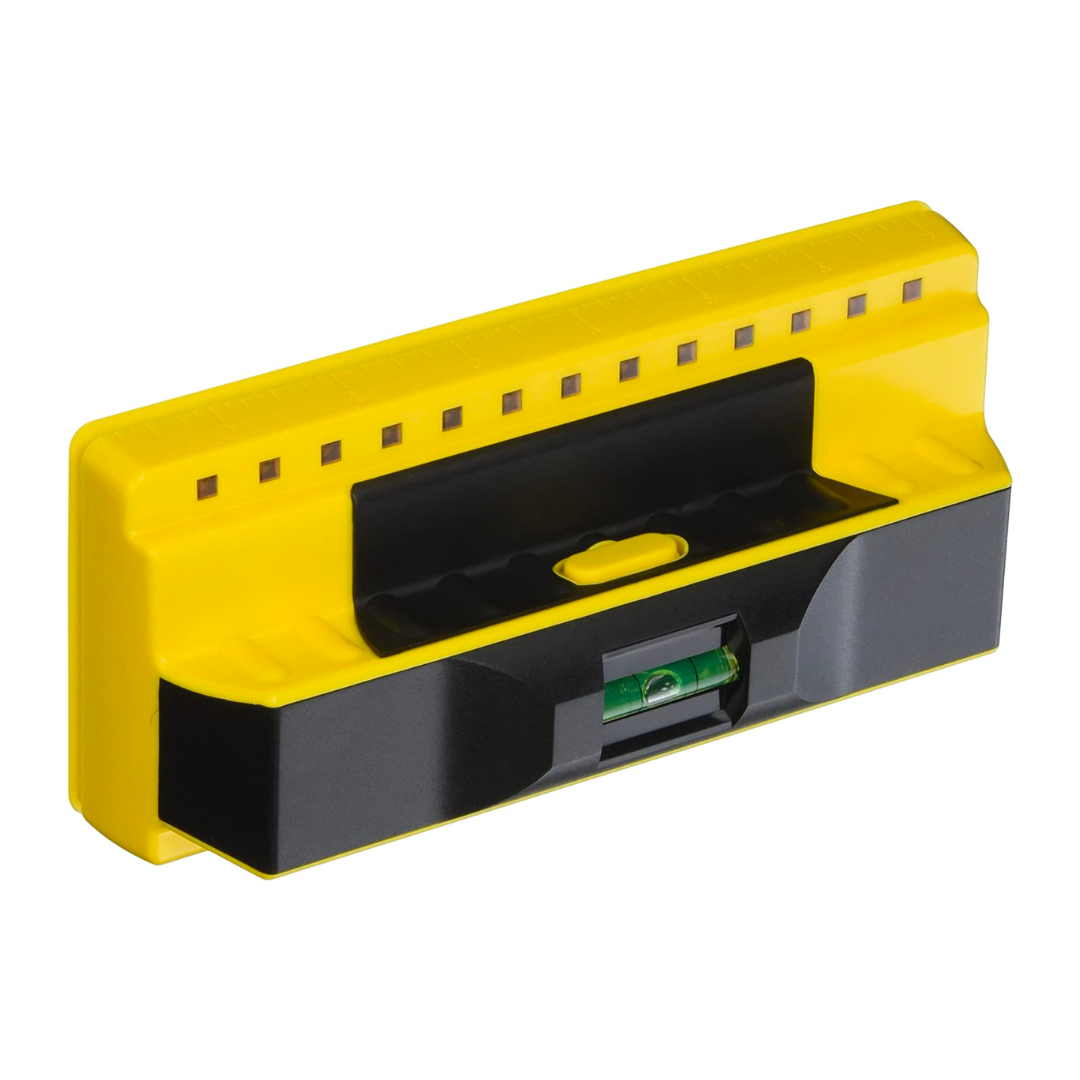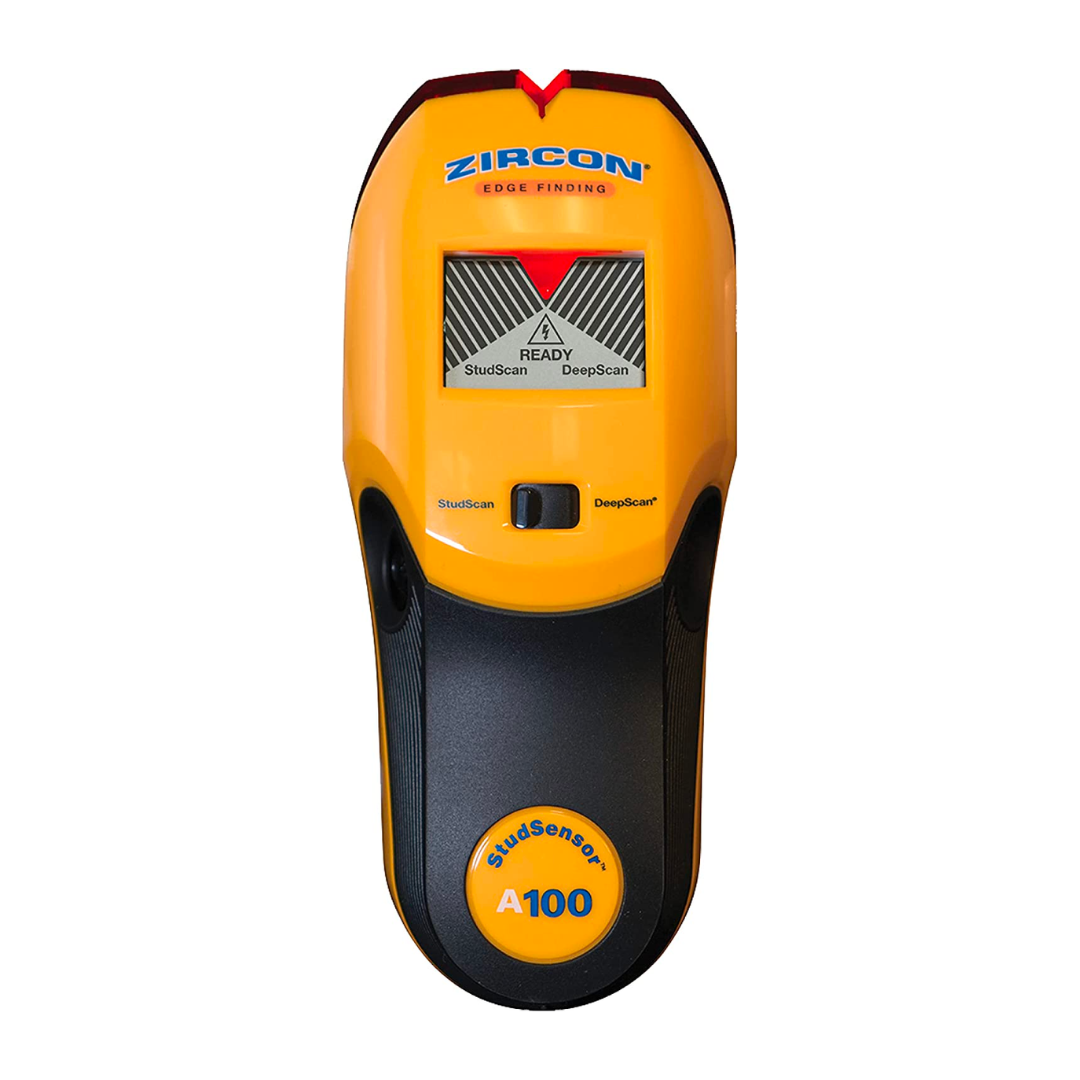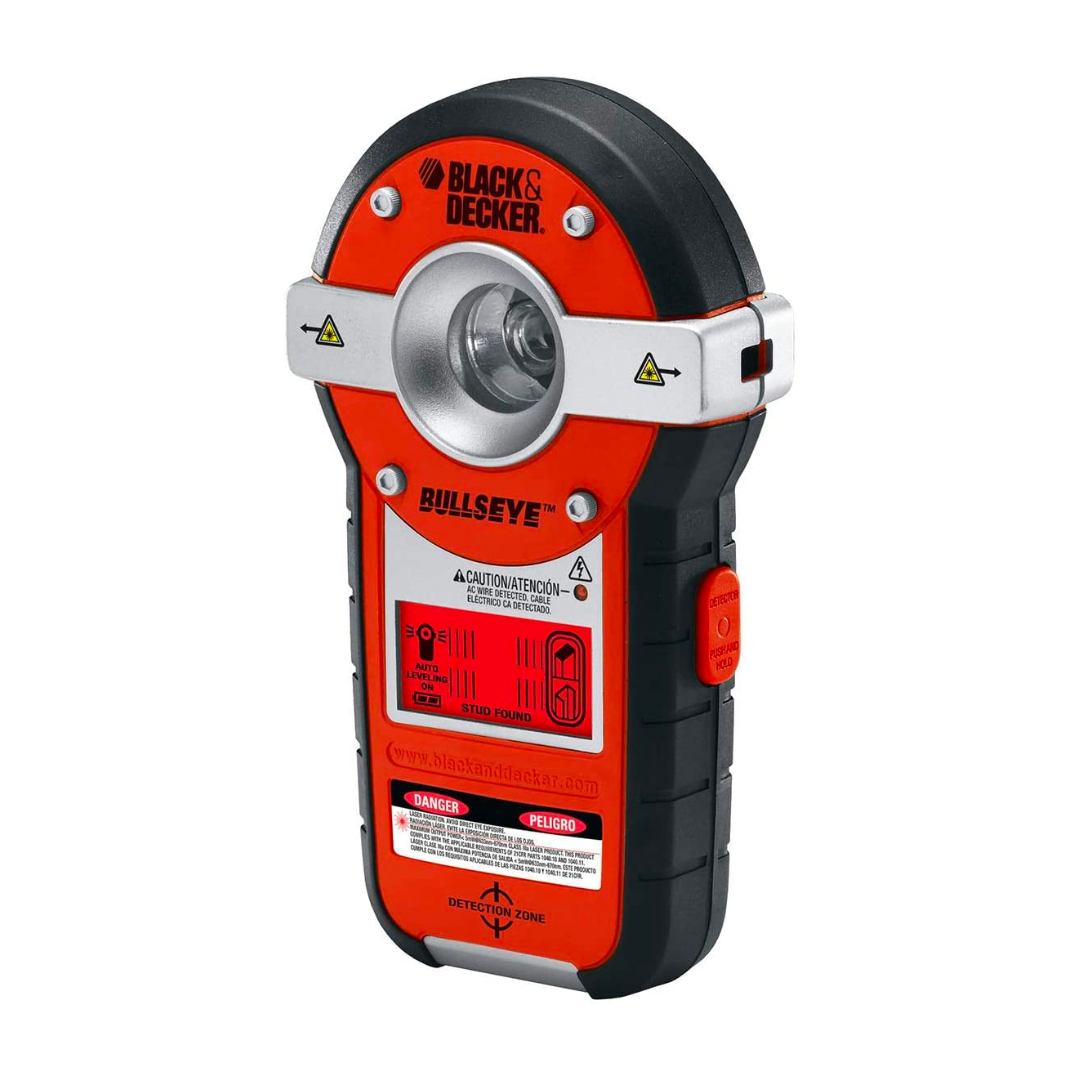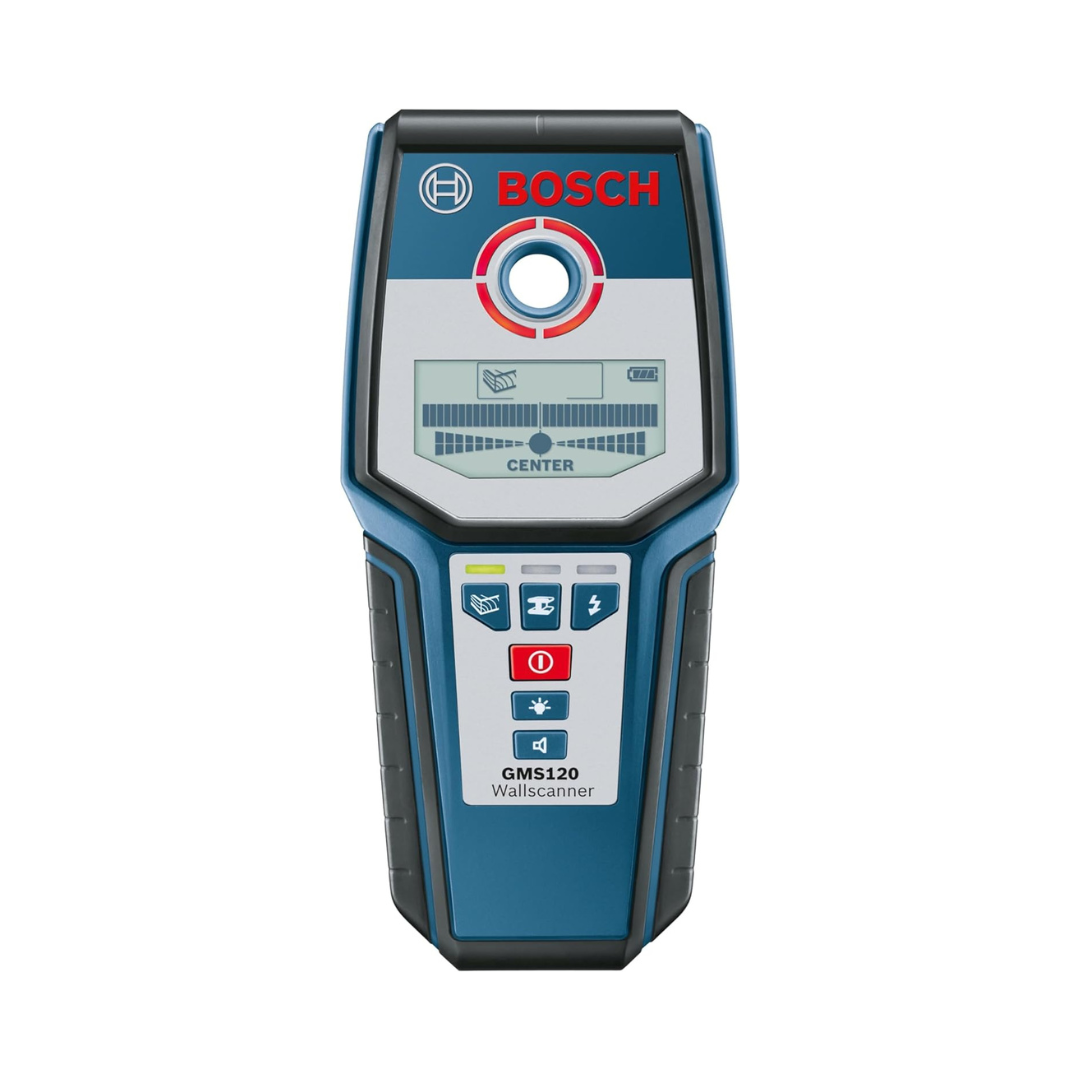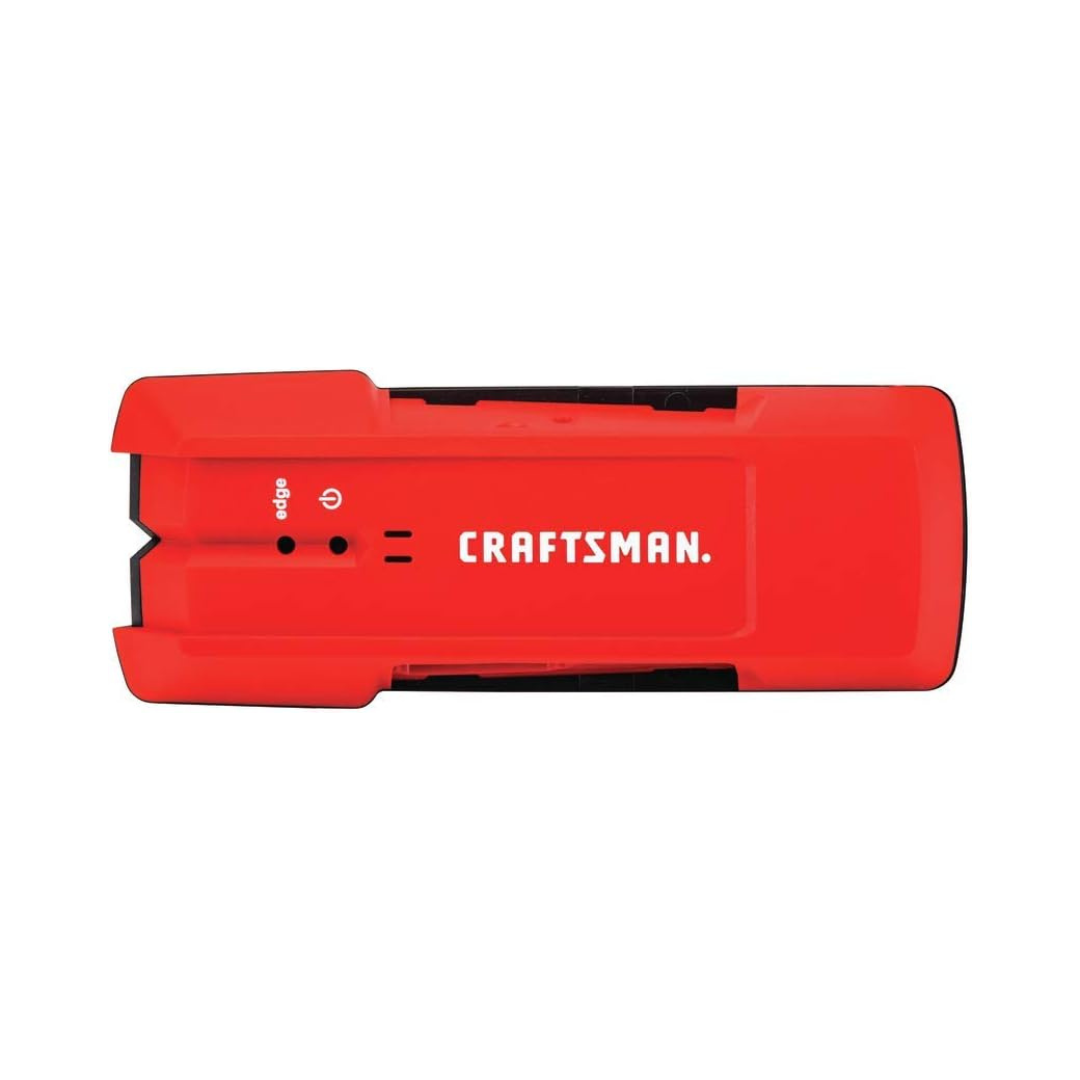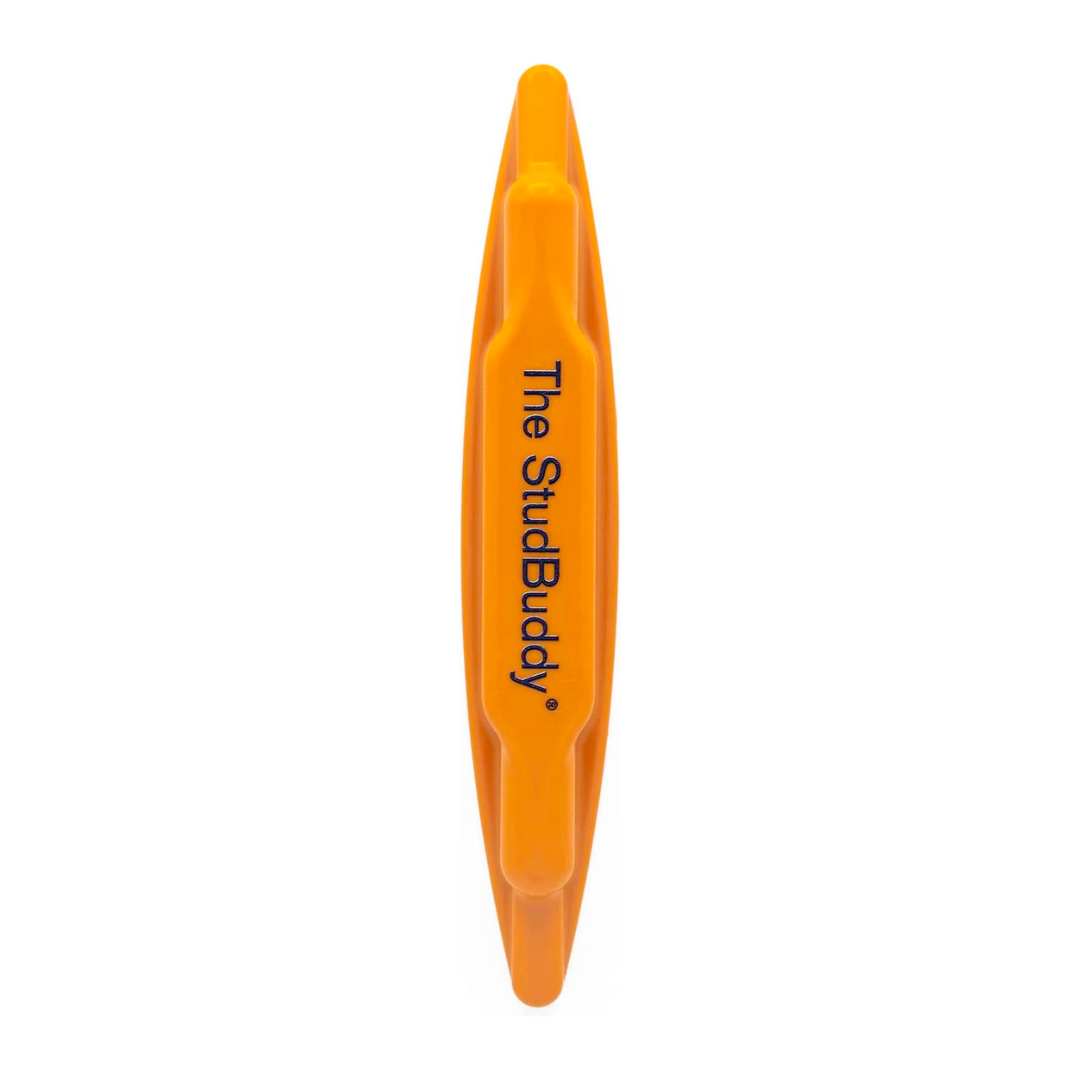We may be compensated if you purchase through links on our website. Our team is committed to delivering honest, objective, and independent reviews on home products and services.
Stud finders help you locate the studs and fasteners in your walls, allowing you to securely mount heavy or delicate items by drilling into the stud and using the right hanging hardware.
In this review and buyer’s guide, I explore the top stud finders available, highlight key features and considerations to keep in mind when purchasing, and address some frequently asked questions. You can also check out our tools buying guide for more critical factors to consider when shopping for tools for your home. Read below for more of my top picks.
Top 6 Stud Finders
*Links below open to product retail page.
- Best Accuracy: Franklin Sensors Prosensor Professional Stud Finder
- Best Grip: Zircon StudSensor Wall Scanner
- Best Laser: BLACK+DECKER Line Laser
- Most Versatile: Bosch GMS120 Digital Multi-Scanner
- Best Budget Pick: Craftsman Stud Finder
- Best Magnetic: The StudBuddy Magnetic Stud Finder
Compare Top Stud Finders
| Product | Scan Depth | Power Source | Display Panel | Item Weight | |
|---|---|---|---|---|---|
| Franklin Sensors Professional Stud Finder | 1.6 inches | AA batteries (2) | No | 6.4 ounces | |
| Zircon StudSensor Wall Scanner | 1.5 inches | 9-Volt battery | Yes | 9.1 ounces | |
| BLACK+DECKER Line Laser | Not listed | AA batteries (2) | Yes | 15.8 ounces | |
| Bosch GMS120 Digital Multi-Scanner | Varies by material | 9-volt battery | Yes | 1.1 pounds | |
| Craftsman Stud Finder | 0.75 inches | 9-volt battery | No | 1.8 ounces | |
| The StudBuddy Magnetic Stud Finder | N/A | N/A | No | 1.6 ounces | |
| Product | Scan Depth | Power Source | Display Panel | Item Weight |
Best Accuracy
Pros and Cons
✔ Features a built-in ruler and bubble level
✔ Offers convenient LED indicators
✔ Boasts a large, 21-inch sensing area
✘ Doesn’t have a screen
✘ Prone to detect other magnetic objects within the wall, not just studs
What Customers Are Saying
I found that customers who liked that this product thought it was multifunctional, saying that it gave them all of the tools they needed to hang items from their walls. However, I also noted that some customers said that it was cheaply made and only worked for some projects. For example, one reviewer said that it couldn’t locate close-proximity studs.
Best Grip
Pros and Cons
✔ Comes with a lifetime warranty
✔ Includes wire detection during all scanning modes
✔ Features a large LCD readout panel
✘ Accuracy may vary depending on wall composition and cover
✘ Lacks dedicated scan mode for live wires
What Customers Are Saying
I noticed that customers often praised this stud finder for its efficiency at scanning for the edge and center of a stud as well as its ability to detect studs in dense materials, such as double sheetrock. Conversely, I saw customers who were unhappy with this stud finder say that it didn’t move smoothly on some walls and that it gave false positive readings on some materials, such as porcelain tile.
Best Laser
Pros and Cons
✔ Features patented auto-leveling technology
✔ Comes with two batteries for operation
✔ Includes a 2-year limited warranty
✘ More expensive than similar products on the market
✘ The red screen makes it difficult to read
What Customers Are Saying
I found that a lot of customers said that this product rendered accurate readings and was easy to use. Others mentioned that it continued to perform well even after they had owned it for years. On the other hand, I did notice some dissatisfied customers who said that the stud finder was bulky and top-heavy, making handling difficult. A few reviewers also noted issues with using the product vertically.
Most Versatile
Pros and Cons
✔ Includes a center finder that pinpoints the object’s middle
✔ Has an illumination ring that indicates detection status
✔ Has deep connectivity; as much as 4 3/4-inches on cured concrete
✘ Has a high price point
✘ Not necessary for customers who only need a stud finder
What Customers Are Saying
On the positive side, I saw that customers who were pleased with this stud finder liked that it had a user-friendly design, with several calling out the backlit LCD display and center indicator. Others liked that it worked on multiple material types. However, there were some others who found this stud finder to be inaccurate, and others said it worked just as well as stud finders that had a much cheaper price.
Best Budget Pick
Pros and Cons
✔ Works on both wood and metal walls
✔ Comes at an affordable price
✔ Has a compact, lightweight design
✘ Lacks the depth of other heavy-duty stud finders
✘ Some customers said it took a long time to locate studs
What Customers Are Saying
My research showed that customers who gave this product a positive review liked that it was perfect for hanging small objects and had a durable, long-lasting design. Others gave positive feedback on its overall accuracy. However, some found it difficult to use and was limited in its effectiveness. Others said it took a long time for the device to locate studs.
Best Magnetic
Pros and Cons
✔ Features ultra-strong neodymium magnets to detect screw or nail heads
✔ Offers ergonomic, comfort-fit design
✔ Product manufactured in the USA
✘ Not intended for use on lath or plaster walls
✘ Some customers thought that the stud finder was overpriced given its simplicity
What Customers Are Saying
Many reviewers I saw were pleased with the simplicity and effectiveness of this magnetic stud finder. They stated that it was lightweight and easy to use and yielded reliable and consistent results. However, some reviewers complained that the stud finder was only able to identify the location of metal screws and nails rather than the studs themselves, and I noticed other users who thought that stud locator was a little pricey.
Stud Finder Buying Guide
Stud finders are essential for DIYers when hanging items or mapping out any project on one of your home’s walls. In addition to choosing between magnetic and electronic stud finders, think about each product’s battery life and additional features. I put together the following buying guide to help you examine the most important features when choosing a stud finder.
Type of Stud Finder
Stud detectors are either magnetic or electronic. The latter type can be further broken down into subcategories.
Magnetic
Magnetic stud finders use large magnets to find the nails that are holding the studs together. Some magnetic stud finders I researched are molded into a plastic casing, while some are left loose.
With molded ones, you can feel the magnetic attraction as you push it along the wall. With loose ones, you’ll hear a “thunk” noise when it finds something or see a bright piece of plastic pop up.
Notably, the downside to this type of stud finder is that you can’t guarantee that it found a stud and not some other magnetic piece behind the wall.
Electronic
All electronic stud finders use sensors to measure the change in density in the wall. Typically, you must place the stud finder on a part of the wall without studs to ensure it gets calibrated before sliding it across the wall to find studs. Once the finder locates a stud, the results are displayed on an LCD screen.
There are three subcategories of electronic stud finders:
- Center: Center finders use multiple sensors to gauge the stud’s entire width and provide you with the location of the center of the stud.
- Edge: An edge stud finder finds the edge of the stud. After finding that edge, you have to approach the stud from the other side to find its other edge and determine its width.
- Multi-sensor/Instant: This is a relatively new type of stud finder that scans an entire wall at once to give you the location of all of the studs. Because this type of stud finder requires multiple readings, my research indicates that it tends to be more accurate than the other electronic types. It doesn’t require calibration before use, either.
Battery
Most electronic stud finders use 9-volt or AA batteries to operate. However, manufacturers rarely supply these batteries, which means you’ll have to remember to purchase the initial ones and any backup ones as they die. The battery often powers the wall stud finder’s “beep,” which is typically emitted when a stud, joist, or certain feature of the wall is detected.
Grip
Ergonomics are worth considering, especially if you’ll be using your stud finder on a regular basis. Many stud finders have a comfortable grip which can be used to gently and carefully guide it along the wall.
Extra Features
Some electronic stud finders can detect live electric cables and different types of metal in addition to finding studs. This feature-set ensures that you’re not drilling into any sensitive or dangerous equipment behind your wall.
Brand
Some of the top stud finder brands include:
- BLACK & DECKER
- Bosch
- Craftsman
- DeWalt
- Franklin Sensors
- Ryobi
- Studbuddy
- StudPop
- Zircon
Other Tips for Finding Studs in Your Walls
While a stud finder is the easiest way to help you find studs in your walls, there are other ways you can look if you’re attempting to find a stud. Here are some other tips and tricks I gathered to help you locate studs.
- Look for Nails or Screws: Studs are often found where pictures, mirrors, and shelves have been mounted previously on your walls. The nails or screws likely went into a stud, so you should be able to locate one in that area.
- Knock on the Wall: Knocking on the wall and listening for a “solid” vs. “hollow” sound will help you determine if that area has a stud. Studs will sound more solid when knocked on compared to just drywall.
- Check Around Standard Stud Spacing: Look for studs around 16 inches or 24 inches on center. Measure from a known stud and check for others at these intervals, as that is the general standard stud spacing best practice.
- Look for Small Vertical Cracks: Check your wall for small vertical cracks or nail pops in the drywall. These often occur right where studs are located due to normal house “settling” and could give away the location of a stud.
- Look for Wall Plates: Check closely for top and bottom wall plates to which studs could be attached. Baseboards or crown molding may cover them, but you can test that area with a strong magnet to determine if a stud is present.
Stud Finder FAQs
How can I hang a heavy item if I can’t find a stud?
If you’re trying to hang something heavy such as a mirror or TV, but are struggling to find a stud, find out if there’s a proper fastener for the situation that doesn’t require a wall stud. Drywall anchors and hollow-wall anchors are two of the most common options for studless load-bearing jobs.
Why isn’t my stud finder working?
Battery-operated stud finders can be finicky. If you’re having trouble getting it to function, change the batteries, then try recalibrating and testing the stud finder. If the tool still doesn’t work, it may be time to purchase a new one.
Can I use my smartphone as a stud finder?
Yes, in fact there are many apps that allow you to use your smartphone as a stud finder. However, my research indicates that these apps aren’t nearly as accurate or trustworthy as dedicated stud finders. Note that the app may not offer as many features as a true stud finder, such as detecting live wires or leveling the surface.
How far apart are studs?
Most studs are 16–24 inches apart, but I’ve found that’s not always the case. Before hanging an object that requires more than one stud, measure the wall for all studs instead of just finding one and assuming the next one will be 16–24 inches away from it.
Who This Stud Finder Guide Is For
Whether you’re a budding DIY enthusiast, a seasoned contractor, or somewhere in between, a reliable stud finder is an essential component of to any home tool kit.
I considered a variety of options, from a simple stud finder to models made so you can locate and drill studs for electrical wiring or mount that 85-inch flat screen T.V.
How We Picked the Best Stud Finders
To provide our readers with the best stud finder recommendations possible, we rely on several key sources of information to help guide our selection process.
Initial Research: Our research process began by generating a list of models with a significant number of verified-buyer reviews and an average customer review rating of 4–5 stars. We looked at positive and negative reviews alike, focusing on information from both satisfied and critical buyers.
Expert Insights: Through our years of experience, we’ve learned that listening to what others have to say is key to building accurate, well-rounded articles. To complement our in-house expertise, our team looked at reviews and videos from trusted publications and independent testers, drew insights from subject matter experts, and consulted This Old House reader contributions.
Final Product Selection: Finally, we tuned-up our list by replacing older models with the latest versions and eliminating any discontinued stud finders. From there, we pared the list down further by comparing each tool’s feature-set and selecting the best-in-class options for a variety of buyers, budgets, and scenarios.
Why You Can Trust Us
This Old House has empowered homeowners and DIYers for more than four decades with top-notch home improvement advice in the form of television programs, print media, and digital content.
Our team focuses on creating in-depth product and service review content. To date, we’ve published numerous tool reviews, from cordless drills and impact drivers to tape measures and laser levels.
Once we conclude our research, we craft a comprehensive, user-friendly article of recommended products and additional information to help our readers make the right purchase.
Questions or Comments?
To share feedback or ask a question about this article, send a note to our team at reviews@thisoldhousereviews.com.
